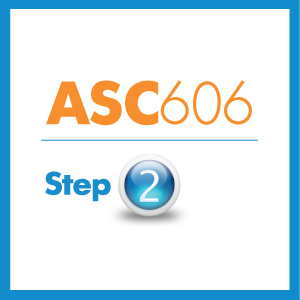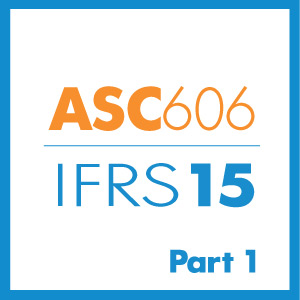Three Financial Time Drains for Trade Contractors
There are over 10 million trade service contractors, and while some operate as single independent contractors, many others operate in a larger business unit, with large-scale time management, purchasing, and accounting needs, run either by a business manager or staff who needs to manage purchasing, labor, billing and more.
Whether you’re in the business of electrical work, plumbing, HVAC services, data networking, roofing, painting, carpentry, sheet metal, or one of the many other trades, your industry faces some unique back office challenges.
With this in mind, one of the biggest concerns is likely this: You’re doing more and more work each month, and expected to get it done in the same amount of time. While you used to be making or supporting decisions that positioned your company for growth, nowadays you’re struggling to just complete the basics. In essence, you’re working in your business, not working on it.
Working in vs. Working on Your Trade Contractor Business
For an accounting professional, manager, or other business leader at a trade contractor, working in your business is simple: spending your day completing the necessary tasks in line with your job description.
However, when you’re working on your business, you’re getting all of the necessary tasks done, but also doing work to improve the business. This could include anything from highlighting opportunities for purchasing to save money, finding new opportunities for the project department to improve efficiency, or even finding ways to generate new business. Simply put, working on your business is where the money is made.
Unfortunately, one of the problems that trade contractors face is that leaders constantly get caught up in the minutiae of the daily grind and lose sight of the big picture. With rare exceptions, the people at a business want to help said business grow, but they often lack the processes or technology to do so.
If you really want to start focusing on the big picture, you need to take a step back, look at your everyday tasks, and look for certain things you can automate, so you to get back to working on your business.
Three Necessary Time Drains Preventing You from Working On Your Business
While the trade may differ, the process of accounting for it is relatively similar, and if you’re like most, you waste away on manual processes surrounding one or more of the following tasks.
Contracts, Completion, and Revenue Recognition
Much of your work is based in contracts, and whether you’re looking at the current way of doing business (PCM/CCM) or the ones about to take hold (performance obligation), bringing everything together poses challenges and creates a lot of work.
If the current method seems laborious, the new standards about to take hold will create a new set of challenges, as the contractor task force has been among the most vocal of the AICPA working groups who have noted implementation challenges. For businesses with outdated, manual processes, this means you will be doing a lot more work transitioning to the new standard and managing contracts under it.
The Cure: Technology Designed with ASC 606 in Mind
Revenue Recognition for trade contractor organizations can be a complex series of decisions and paperwork—both under the new and old standard. However, with major changes on the horizon, having plans, processes, and technology in place can be the first step in a successful transition to new standards. Sage Intacct was built to make contract management under the new standard simple, handling the complex requirements and providing peace of mind for accounting and project teams.
Learn more about the new standard and how Sage Intacct is ready to tackle the challenges it presents here.
Project Cost and Profitability Tracking
You have to answer a lot of questions on a daily basis. Will this job be completed on time? On budget? Do we have the people to take this job on this date?
Back-office professionals at trade contractors need to be able to answer these questions quickly, efficiently, and accurately. If your answer to any of these questions was “I don’t know” or “let me get back to you,” you don’t have a complete picture of your business. You need to have a complete view of each project—from materials to labor—before, during, and after the project. More importantly, it’s vital that you can come up with answers to these questions quickly.
The Cure: Speed through Automation, Visibility Through Dashboards and More
By automating your processes and setting up dashboards, you can receive and present information quickly, clearly, and compellingly—when and where you need to present it. Sage Intacct offers the right project insight when and where you need it. Whether in the form of dashboards, analytics, or project accounting-focused design, Sage Intacct can handle anything a finance team at a trade contractor can throw at it.
Cash Flow
Just as you need to look at projects before, during, and after, you need to be able to present a cash flow statement for both these projects and for the organization as a whole. This is the job not only of the back office, but of the project manager as well, who needs to be able to accurately present a schedule of values.
Financially savvy companies use standardized processes to ensure that the ability to be cash flow positive exists earlier in the project. PMs need to understand that their goal is to define a revenue recognition strategy that ensures a good cash position for their projects.
The Cure: Anytime, Anywhere Access for Those Who Need It Most
To make this happen, trade contractors need to combine automation with mobility, allowing project managers to access the numbers, submit costs, mark up the costs based on predetermined standards, and get all of this to billing—whenever and wherever. However, thanks to the cloud, providing access to the people who need it is easier than ever. Sage Intacct was recently recognized for its cash management function. Learn more about the feature and how it can make everything from billing to planning easier here.
The Challenges in Accounting for Trade Contractors Don’t Stop There
These are just a few of the time drains that finance and accounting professionals at trade contractors face every day, month, quarter, or year. However, by taking steps to increase automation, mobility, and reporting, the jobs mentioned above can be completed in less time, so you can get back to working on your business.
Sage Intacct provides the automation, reporting capabilities, and analytics you need to make decisions and prepare for the road ahead. Whether you need to manage a team of 10, 100, or 1,000 contractors, Sage Intacct can grow with you, working with other technology you need to manage your business.





